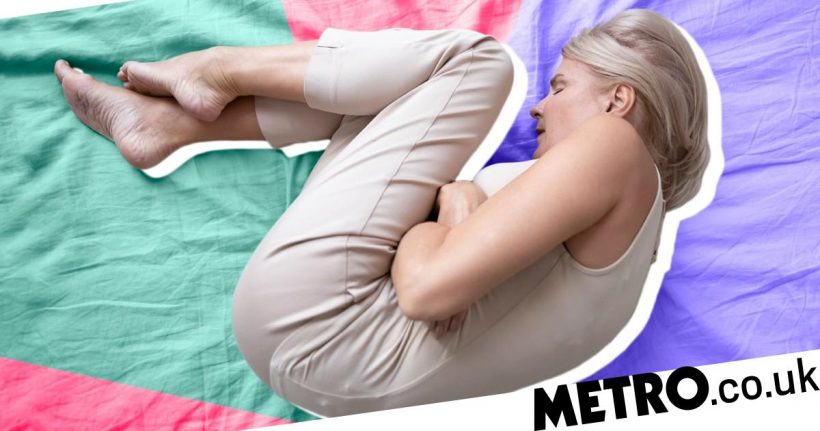
People talk about having good posture all of the time.
We know to avoid ‘tech neck’, quit slouching, and ensure our work station is ergonomically set up.
Rarely, however, do we think of this when it comes to sleep.
Sleep posture expert James Leinhardt of Levitex tells us: ‘People simply don’t know how much their sleeping position affects their life and the pain they feel throughout the day.’
Having worked with patients needing back care support on the NHS, he sees how people seldom think about the position in which they sleep.
‘You stick with what you’re used to because it’s comfortable,’ he says, ‘and blame your neck pain on yesterday’s gardening or other strenuous activities, instead of considering this could have been impacted by sleeping on your stomach and overextending your neck muscles through the night – it’s bound to have an impact.
‘This is particularly clear when working with athletes.
‘I’ve spoken to over 650 professional athletes over time and not a single one had considered the impact of their sleeping position prior, not realising the surface they lie on can impact their rest and recovery.
‘You spend a third of every day asleep, so really focusing on how you can get the most from that could make all the difference – not just for athletes, but for everyone.’
We sleep for 26 years of our lives, so it’s time to consider our sleep posture.

What’s the result of poor sleep posture?
Poor sleep posture is directly related to your spine health.
James says if you have bad posture, ‘eventually you’ll start getting warning signals it’s not right: you’ll face waking up with neck pain, lower back pain, shoulder pain, hip pain, and joint pain.
‘There is a direct, linear relationship between pain, mood, and sleep.
‘If you wake up in pain, you’re immediately in a bad mood, but you’re in a bad mood because everything hurts, and you struggle to sleep because the mood and pain has ground you down all day. It’s a vicious cycle that’s difficult to break.’
If you wake up with a kink or pain, how can you soothe it?
James says: ‘The resolutions we’re normally told to try are physio, yoga, stretching – ultimately anything which is meant to “soothe” the ache.
‘What we should really be doing is tackling the issue before it presents itself. It’s common sense once you consider it: sleeping twisted like a pretzel for eight hours is bound to have a negative impact on your body.’
What’s ‘good’ sleep posture?
The best suggested sleeping position is semi-foetal side-lying – ‘The Dreamer’ – as it puts the least tension through the spine.
James says: ‘Make sure your pillow isn’t too high or too low.
‘It should fill the space between your earlobe and scapula.
‘The second-best position (if you’re not able to lie on your side) is your back, with a pillow that lifts your head just enough to support the curvature between your neck and head, without coming too far forward.’
Source: Read Full Article
